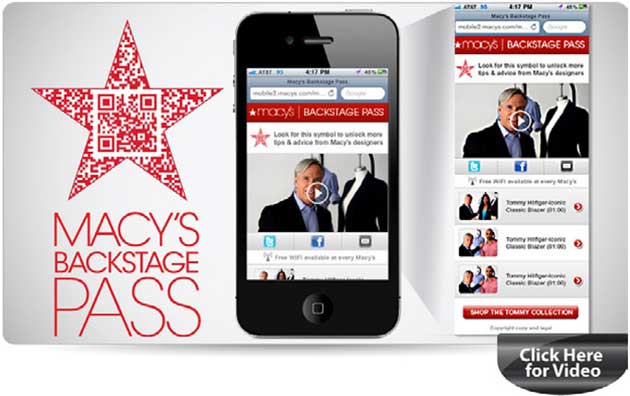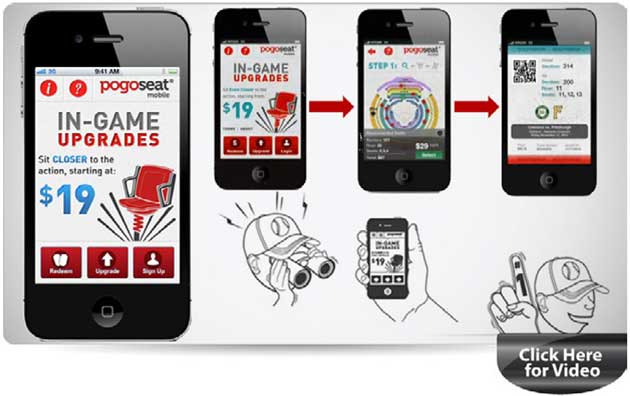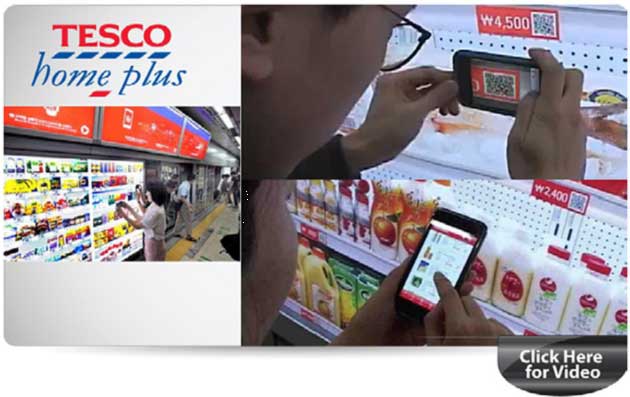In Part 1 of this series I discussed how a constantly connected mobile planet is producing unprecedented business opportunities while heralding a most unique innovation moment for today's marketers. Last week, in Part 2, I focused on the first of five innovation strategies—innovating brand engagement through mobile—and explored how mobile enables far deeper and much richer experiences for target audiences.
In the current segment, we move from engaging to selling—and on to the second innovation strategy: innovating sales channels through mobile.
As any marketer knows, sales are mission-critical to the success and survival of all companies. But what many a marketer doesn't yet fully understand is how many ways mobile can be wielded to stimulate sales... more so than via any other medium.
When e-commerce emerged in the '90s, it was positively exhilarating to have alternatives to brick-and-mortar shopping, as consumers were free to shop from the convenience of their homes through their PCs. Still, though convenient, e-commerce was confining because it required that buyers be connected to the Internet while seated at their stationary computers.
No longer. Now, through mobile, audiences literally carry a sales channel, replete with a payment mechanism, everywhere they go—24 hours a day, 7 days a week, 365 shopping days a year.
What is well understood by marketers is that mobile signifies a high-opportunity revenue channel as audiences are keen to purchase through their smartphones, whether with apps, such as the Starbucks app, or, soon, via the highly trumpeted mobile wallet. The revenue potential of m-commerce is crystal clear: It provides customers a convenient, anytime-anywhere way to shop (and it's already driving 20% of all e-commerce sales).
What is not clear to marketers, however, is how many ways they have for wielding mobile not just a payment method but as a sales channel—precisely where the myriad selling opportunities to innovate through mobile exist.
Marketers should not solely be viewing m-commerce and mobile payments (m-payments) as the totality of ways that mobile can innovate their sales channels. Rather, they should also be setting their sights on how mobile can be used as virtual sales assistants; as an outlet to inspire additional sales at, or near, the point of purchase; and as a way to transform existing places and activities into entirely new sales channels for brands.
Let's look at examples of smart brands using QR codes, mobile videos, and mobile apps to innovate sales channels through mobile.
Macy's: Wielding Mobile as a Virtual Sales Assistant to Inspire In-Store Purchases
Mobile is not only an online outlet to sell in-store products through virtual stores (as with m-commerce) but also a creative tool to inspire more sales from shoppers while they're at physical stores.
Shoppers have always inquired with sales associates about particular products, but mobile enables shoppers to interact directly with the products themselves—helping to inspire and facilitate in-store purchases.
Consider Macy's highly creative use of QR codes that serve to give shoppers a "Backstage Pass" to the department store's lines of prominent designers—including such celebrities as Tommy Hilfigger, Sean "Diddy" Combs, Rachel Roy, and Martha Stewart. The QR codes, featured on in-store signage that shoppers scan with their smartphones, connect to 30-second films of the designers giving fashion inspiration, advice, and tips, with shoppers able to select longer-length content that takes them further backstage with each designer.
That is a prime example of using mobile to innovate the in-store experience: Shoppers are now able to interact directly with products in newer, deeper ways. Macy's strategic move is that it is transforming shoppers' smartphones into virtual sales assistants.
How Macy's has seized the mobile innovation moment:
- Before mobile? Shoppers could inquire about products only with sales associates, who, in turn, worked to facilitate sales.
- After innovation? Shoppers now interact directly with the products themselves, in newer, deeper ways—with mobile working as a virtual sales assistant to inspire in-store sales.
Pogoseat: Wielding Mobile to Produce a New Channel for Up-Selling Products in Real Time
Physical places are not only a channel to sell offerings; they are also a ripe opportunity to up-sell offerings. As is mobile.
Consider Pogoseat, a startup that enables event-goers the ability to upgrade their seats—while at events, through their smartphones. The company reports that 40% of live entertainment seats go unsold—both a whopping loss for event producers... and a tremendous opportunity for gain, through mobile.
Event-goers who spot a better seat while at the events can access Pogoseat's mobile app through their smartphones and instantly buy—and immediately enjoy—the upgrade. Fans get better experiences, and event producers can sell higher-priced seats, making mobile a win-win sales channel for customers and companies alike.
How Pogoseat has seized the mobile innovation moment:
- Before mobile? Audiences could not upgrade their seats while at events, and event producers could not mine these sales opportunities for added revenue once tickets had been purchased.
- After innovation? Attendees get better seats and event producers can tap mobile as a real-time channel to up-sell inventory—and turn what were once revenue losses into real-time profit gains.
Tesco: Wielding Mobile to Transform a High-Traffic Place Into a High-Potential New Sales Channel
Finally, mobile not only serves as a virtual sales assistant to inspire in-store purchases, or as a way to up-sell offerings at the point of purchase, but also serves as an innovative method to transform existing places into entirely new sales channels.
In South Korea, grocery retailer Tesco needed to compete against the market leader, but it needed to do so without building more stores. And the strategy was nothing short of genius: Instead of bringing people to the store, Tesco wielded mobile to bring the store to the people. Rather than build a new store, the company built a new sales channel—via a virtual shopping experience enabled through mobile—and featured its newest store "location" in a high-traffic place: in this case, the public subway.
Tesco installed billboards that mirrored the grocery store experience (shelves of products)... but shoppers, instead of filling their grocery carts, filled their smartphones. By scanning the corresponding QR codes of each desired product, subway riders could now turn their idle waiting time into shopping time. And, closing the loop, Tesco conveniently home-delivered the purchased groceries the very same day.
In an anytime-anywhere world, mobile turns the traditional shopping process on its head—by transforming a high-traffic place into a high-potential sales channel—and brings the store directly to the people.
How Tesco has seized the mobile innovation moment:
- Before mobile? The subway accommodated large numbers of people—but not a store.
- After innovation? Mobile transforms a high-traffic place into a high-potential sales channel—and, in a revolutionary move, brings the store to the people.
Architecting Innovation: Wielding Mobile to Transform Sales Channels for Brands
Without question, mobile enables a range of opportunities to inspire new sales, up-sell offerings in real time ,and revolutionize the very places where products are sold. But, though transformative, mobile is just the technology—the innovation lies in how companies strategically wield this remarkable medium.
So the key question for marketers seeking to innovate their sales channels is this: How can you wield mobile's capabilities and tools—as virtual sales assistants, as a way to inspire and facilitate additional sales at, or near, the point of purchase, and as a way to transform places and activities into entirely new sales channels for your brands?
- Could you transform shoppers' smartphones into virtual sales assistants to inspire more in-store purchases, as Macy's has with QR codes and mobile videos in its "Backstage Pass" program?
- Might you tap mobile to turn revenue losses into real-time profit gains, as Pogoseat has, through a mobile app that enables instant, in-game seat upgrades?
- Could you transform a high-traffic place into a high-potential store, as Tesco has by strategically locating billboards embedded with QR codes throughout the public subways?
Many questions await you—but much innovation, too.
Next week, we'll continue to explore how to wield mobile to innovate more of the marketing ecosystem in Part 4 of this series: "Mobile Innovation Strategy #3: Innovating Product Offerings through Mobile." Discover how to wield mobile's capabilities and tools to energize existing product offerings and catalyze the development of entirely new products, services, and solutions.







